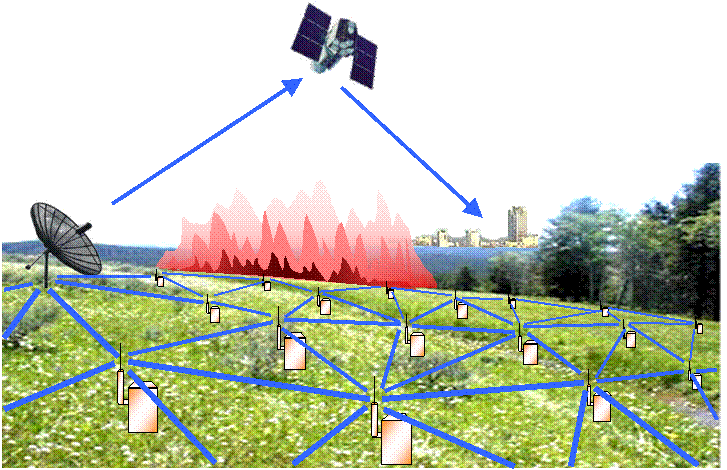

Wireless Sensor Networks (WSNs) are a relatively new application of ad-hoc networks providing high quality monitoring for large geographical areas with relatively inexpensive equipment. The technology involves deploying (manually or from a plane) a large number (50-10,000) of small, inexpensive nodes over the area of interest. Each node is equipped with one or several sensors (suited to the application), a short range (10-100m) radio and a microcontroller. The nodes form an ad-hoc network capable of sending the sensed data to one ore more base stations that further forward the data using a long haul link to the monitoring center.
The first applications of WSNs were military (surveillance and command and control info), but there are also several civilian applications: structure health monitoring, habitat monitoring, border enforcement, etc.
The challenges in WSN usually stem from the limited resources (processing power, transmission bandwidth, memory, battery, etc.) available to each node (to be deployed in large numbers, they have to be inexpensive). Most solutions requiring centralized processing or global information are likely wasteful for large WSNs.
For more details on WSNs, see these surveys:
A Survey on Sensor Networks, IEEE Communication Magazine, vol. 40, no. 8, pages 102-116, Aug. 2002.
Wireless Sensor Networks: A SurveyIEEE Computer, vol. 38, no. 4, pages 393-422, Mar. 2002.